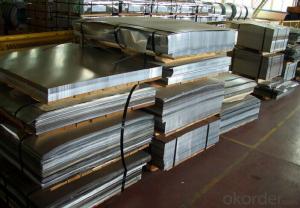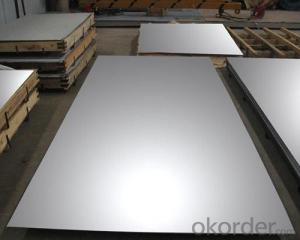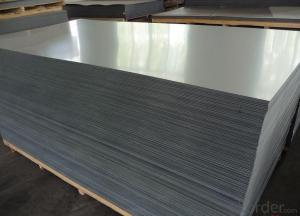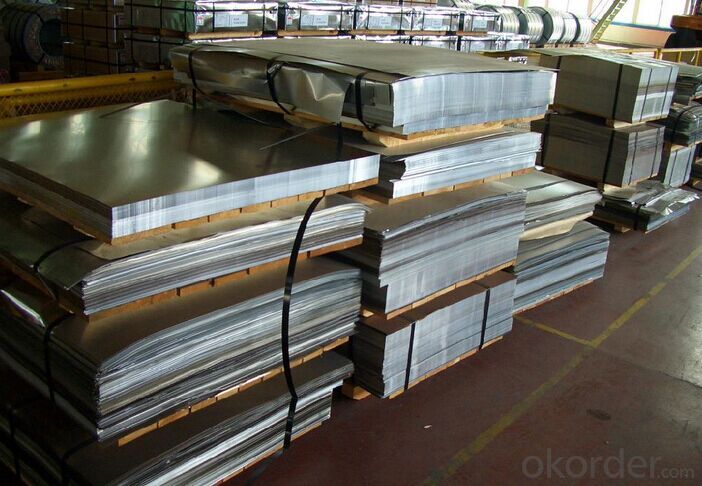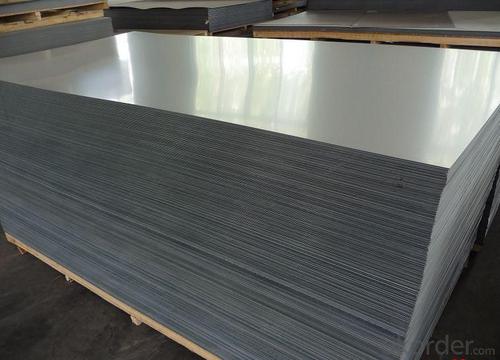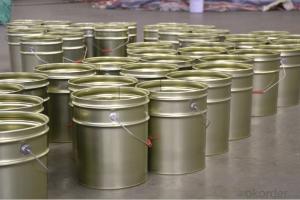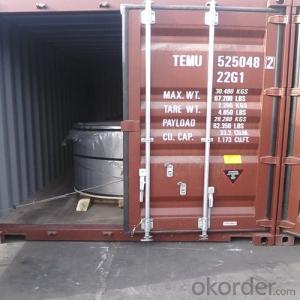Electrolytic Tinplate Sheets for Tin Cans Making
- Loading Port:
- Tianjin
- Payment Terms:
- TT OR LC
- Min Order Qty:
- 25 m.t
- Supply Capability:
- 7000 m.t/month
OKorder Service Pledge
OKorder Financial Service
You Might Also Like
1.Structure of Electrolytic Tinplate Sheets for Tin Cans Making Description
Electrolytic Tin Plate Coils and Sheets for Foods Metal Packaging, is one thin steel sheet with a coating of tin applied by electrolytic deposition. Tinplate made by this process is essentially a sandwich in which the central core is strip steel. This core is cleaned in a pickling solution and then fed through tanks containing electrolyte, where tin is deposited on both sides. As the strip passes between high-frequency electric induction coils, it is heated so that the tin coating melts and flows to form a lustrous coat.
2.Main Features of the Electrolytic Tinplate Sheets for Tin Cans Making
Appearance – Electrolytic Tin Plate is characterized by its beautiful metallic luster. Products with various kinds of surface roughness are produced by selecting the surface finish of the substrate steel sheet.
Paintability and printability – Electrolytic Tin Plates have excellent paintability and printability. Printing is beautifully finished using various lacquers and inks.
Formability and strength – Electrolytic Tin Plates have got very good formability and strength. By selecting a proper temper grade, appropriate formability is obtained for different applications as well as the required strength after forming.
Corrosion resistance – Tinplate has got good corrosion resistance. By selecting a proper coating weight, appropriate corrosion resistance is obtained against container contents. Coated items should meet 24 hour 5 % salt spray requirement.
Solderability and weldability – Electrolytic Tin Plates can be joined both by soldering or welding. These properties of tinplate are used for making various types of cans.
Hygienic – Tin coating provides good and non toxic barrier properties to protect food products from impurities, bacteria, moisture, light and odours.
Safe – Tinplate being low weight and high strength makes food cans easy to ship and transport.
Eco friendly – Tinplate offers 100 % recyclability.
Tin is not good for low temperature applications since it changes structure and loses adhesion when exposed to temperatures below – 40 deg C.
3.Electrolytic Tinplate Sheets for Tin Cans Making Images
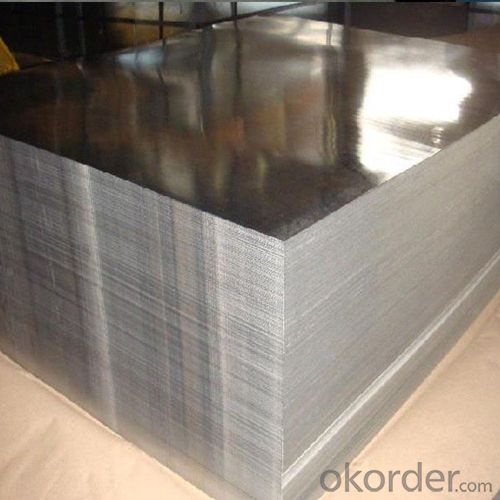
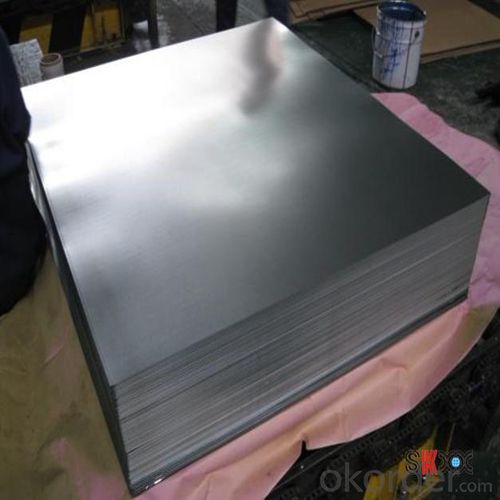

4.Electrolytic Tinplate Sheets for Tin Cans Making Specification
Standard | ISO 11949 -1995, GB/T2520-2000,JIS G3303,ASTM A623, BS EN 10202
|
Material | MR,SPCC |
Thickness | 0.15mm - 0.50mm |
Width | 600mm -1150mm |
Temper | T1-T5 |
Annealing | BA & CA |
Coil Inner Diameter | 508mm |
Weight | 6-10 tons/coil 1~1.7 tons/sheets bundle |
Passivation | 311 |
Oil | DOS |
Surface | Finish,bright,stone,matte,silver |
5.FAQ of Electrolytic Tinplate Sheets for Tin Cans Making
- How are the Electrolytic Tin Plates specified?
The Electrolytic Tin Plates are specified as per the steel base, extent of tempering, the coating weight, annealing method and the surface finish.
- How many types there are for base steels?
The base steels are of three types: Type MR, L, D
-What your tinplate material is used for ?
Tinplate is widely used for the packaging of products. Such as food cans,
beverage cans, pet cans, closures, general line cans and so on.
Printed Tinplate is offered!!
-How to place .an order or contact you ?
Please send us Email. we will give you a quick response in seconds .
- How is your quality ?
All our quality is prime even the secondary quality . We have many years experience
In this field with serious quality control standard . Advanced equipment, We welcome your visit to our factory .
- Q: How is tinplate used in the manufacturing of toys?
- Tinplate is commonly used in the manufacturing of toys as it provides a durable and lightweight material for various components. It is often used for packaging, such as toy boxes or containers, as it can be easily shaped and decorated. Additionally, tinplate can be used for creating toy parts, such as miniature cars or robots, due to its malleability and ability to hold intricate designs. Overall, tinplate enhances the aesthetic appeal and functionality of toys, making them more appealing to consumers.
- Q: How does tinplate compare to paperboard in terms of packaging applications?
- Tinplate and paperboard have different characteristics that make them suitable for different packaging applications. Tinplate is a durable and corrosion-resistant material that is commonly used for packaging products that require protection from moisture, air, and light, such as canned food and beverages. It offers excellent barrier properties and can be easily shaped into various forms, making it ideal for products that require a tight seal. On the other hand, paperboard is a versatile and cost-effective option for packaging applications. It is lightweight, recyclable, and biodegradable, making it environmentally friendly. Paperboard is commonly used for packaging dry goods, such as cereal boxes, cosmetics, and pharmaceuticals. It provides good printing capabilities, allowing for attractive and informative designs. In summary, tinplate is preferred for products that require strong protection and preservation, while paperboard is suitable for lightweight products that benefit from eco-friendly packaging options. The choice between the two materials depends on the specific needs of the product and its target market.
- Q: What are the main applications of tinplate in the toy industry?
- One of the main applications of tinplate in the toy industry is for creating durable and visually appealing packaging. Tinplate is commonly used to make toy boxes and containers that not only protect the toys but also enhance their overall presentation. Additionally, tinplate is also utilized in manufacturing toy parts and accessories, providing a sturdy and reliable material for various components of toys.
- Q: Can tinplate be used for stationery and office supplies?
- Yes, tinplate can be used for stationery and office supplies. It is a versatile material that can be easily shaped into various forms such as pencil cases, storage boxes, and document holders. Additionally, tinplate is durable, lightweight, and has a visually appealing metallic finish, making it suitable for both functional and aesthetic purposes in the stationery and office supply industry.
- Q: What are the benefits of using tinplate for paint cans?
- Tinplate offers numerous benefits for paint cans, including its excellent durability, resistance to corrosion, and ability to maintain product quality by providing a protective barrier. Additionally, tinplate is recyclable, making it a sustainable choice for packaging.
- Q: How is tinplate affected by different types of beverages?
- Tinplate is generally resistant to most types of beverages, including acidic ones. However, certain highly acidic or corrosive beverages, such as fruit juices, can cause a chemical reaction with the tin coating, potentially leading to a metallic taste or discoloration. To prevent this, tinplate cans are often lined with a protective coating, such as lacquer or polymer, to ensure the beverage's quality and safety.
- Q: How to quickly open the bottle?
- A tin can be opened, the handle is separated, and the canned fruit can be clamped by the head, and the rotating knob and the tin can be opened. Remember, when you turn the knob, you can only rotate clockwise and turn counterclockwise clockwise.
- Q: What are the different methods of reusing tinplate packaging?
- There are several ways to reuse tinplate packaging. One common method is to repurpose the packaging for storing small items like buttons, jewelry, or crafting supplies. Tinplate packaging can also be used as decorative containers for plants, candles, or as unique gift boxes. Additionally, tinplate packaging can be recycled and used to create new products, reducing waste and promoting sustainability.
- Q: Can tinplate be used for packaging fragile items?
- Yes, tinplate can be used for packaging fragile items. Tinplate is a durable material that provides excellent protection against impact and external factors, making it suitable for packaging delicate and fragile items.
- Q: What are the different methods of labeling and branding on tinplate packaging?
- Some of the different methods of labeling and branding on tinplate packaging include lithographic printing, embossing, hot stamping, and screen printing.
Send your message to us
Electrolytic Tinplate Sheets for Tin Cans Making
- Loading Port:
- Tianjin
- Payment Terms:
- TT OR LC
- Min Order Qty:
- 25 m.t
- Supply Capability:
- 7000 m.t/month
OKorder Service Pledge
OKorder Financial Service
Similar products
Hot products
Hot Searches
Related keywords
